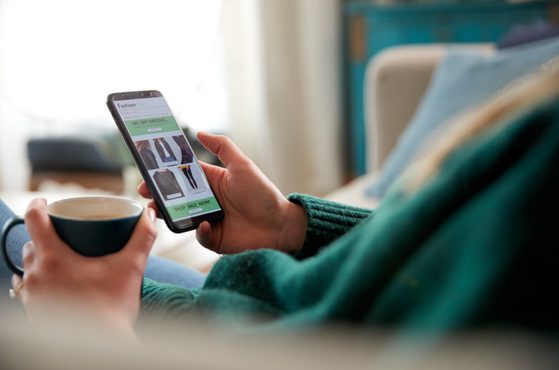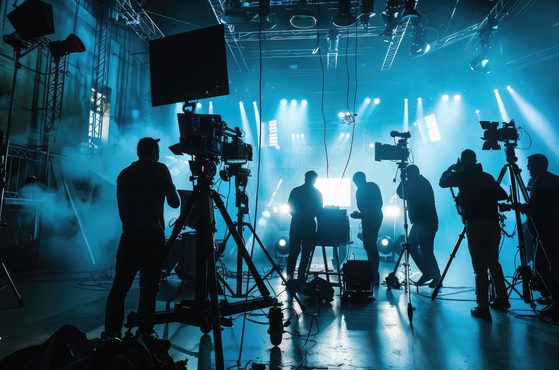Retail’s battle with ‘dupe’ culture — how brands like Lululemon are fighting back

We explore recent examples of how brands are responding to dupe culture and outline practical steps that retail businesses can take to protect their brand.
Read more
We make the difference. Talk to us: 0333 004 4488 | hello@brabners.com
AuthorsEleanor Green
10 min read
Sport, Commercial & Contracts, Intellectual Property, Reputation Management & Defamation, Football

Today, a footballer’s brand and persona can be just as profitable as their lucrative playing careers.
With some Premier League clubs having over 70 commercial partners — all seeking to use and exploit the image rights of high-profile players — it’s important for footballers to be aware of their rights and the best ways to manage them.
Here, Eleanor Green provides a straightforward guide for footballers (and other athletes) looking to maximise their commercial income and maintain control over their image rights.
As commercial drivers continue to push football into the fashion, lifestyle, entertainment and technology spheres, clubs and brands alike are looking for ways to monetise.
This includes entering into various commercial partnerships with both clubs and players — pursuant to which high-profile players are contracted to advertise their products.
The protection of players’ image rights (as well as those rights pursuant to commercial agreements) is therefore becoming increasingly important.
Players are now faced with a wide range of issues, including how to secure licence fees and maximise commercial income from clubs and brands that are looking to capitalise on their image rights, as well as how to maintain control, exclusivity and value when licensing their rights to third parties.
The term ‘image rights’ refers to an individual’s proprietary rights to their personality and the right to control, licence, exploit and prevent unauthorised third parties from making use of attributes related to their image.
Image rights may include a player’s:
Image rights can be exploited in many ways, including:
While each individual player is the 'owner’ of their image rights, a high-profile player with their own recognisable personal brand is often advised to set up an Image Rights Company (IRC), for which they’ll usually be the sole director/shareholder.
Such players are advised to assign their image rights to that IRC using a ‘Deed of Assignment’. This allows the individual player to assign ownership of their image rights to their IRC in exchange for nominal consideration.
The IRC will hold these rights and typically licence them to the relevant club, brand and/or sponsor for a fee, as part of an endorsement deal or commercial agreement.
In this way, an IRC enables a player with public ‘persona’ or ‘brand’ to market and commercially exploit their brand, reputation and image via a separate corporate entity.
The advantages to setting up and using an IRC include:
While there are overwhelming benefits that come with setting up an IRC, players must be aware that in their capacity as sole director of the IRC (i.e., a limited company), they must comply with the statutory director’s duties (i.e., exercising reasonable care, skill and diligence). In addition, while the IRC will be party to image rights agreements, endorsement agreements and/or sponsorship agreements, it will be the player that is ‘performing’ the relevant obligations under any such agreements — and therefore has a personal responsibility not to act in breach of the terms of said agreements.
The standard playing contract focuses predominantly on the player’s image in a ‘football’ or ‘club’ context. Clause 4 of the standard player contract grants to the club certain rights of use of the player’s image — mainly in respect of promotional, community and public relations activities of the club, its commercial partners, the league and the league’s main sponsors.
However, in circumstances where (for example) the player has a sufficiently high-profile public image (such as a significant social media following) and the club wishes to exploit that player’s profile/image beyond what would be perceived as ‘normal club duties’, a separate standalone image rights agreement may be appropriate.
If a player has already assigned their ‘image rights’ to an IRC, then this agreement (and any other endorsement deal or commercial agreements) would need to be between the club (or brand/sponsor) and the IRC.
An image rights agreement is a commercial agreement designed to protect a player’s right to earn income from the use of their image rights by a club, brand and/or sponsor.
These agreements serve as a mechanism for clubs to remunerate players for their off-pitch commercial activities, including engagements with sponsors associated with the club. This arrangement not only benefits players financially but also enhances the club’s commercial and financial standing.
While image rights agreements are often extremely long and complex, there are key aspects that players must be aware of when entering into this type of agreement.
With some clubs having a vast number of commercial partners, players should be aware of potential conflicts of interest with their own personal sponsorships. This would apply to the likes of Jack Grealish’s partnership with Gucci or David Beckham’s infamous partnership with Pepsi, where clubs may have existing agreements with brands that restrict players from endorsing direct competitors.
As a result, an image rights agreement will typically include clauses that restrict a player’s ability to engage with other commercial entities. It’s essential for players to understand these restrictions thoroughly as they can significantly limit the player’s ability to leverage their image for personal endorsements.
A useful case study that can be used to exemplify this point is Lionel Messi. Messi was sponsored by Nike from the age of 14 and even made his Barcelona debut wearing Nike boots. However, when adidas (in 2006) offered around double the annual fee that Nike was paying, Messi agreed to enter into a boot deal with adidas. This caused a major commercial problem with both legal and contractual implications, as Barcelona’s primary sponsor was Nike.
Any contracts relating to image rights must therefore be negotiated carefully — especially where a player is joining a new club. There have been some instances where a transfer deal has been held up or even collapsed due to the issue of image rights.
As most players will play for more than one club over the course of their careers, it’s crucial that they seek to ensure that no club retains the right to use their image in perpetuity.
To avoid such situations, players would be well advised to have a precisely defined term before the exploitation of image rights in the agreement. Specifically, a player (or their representatives) should clarify the terms regarding post-termination use of the player’s image by the club.
While it’s reasonable for clubs to want the right to be able to refer to players in a historical context after the term — such as in social media posts and other archived material — there should be clear provisions regarding this issue. Further, if merchandising rights have been acquired, a run-off period is typically agreed to allow the club to sell off any remaining stock (such as shirts).
Players should ensure that the image rights agreement contains specific provisions that require the club to cease using their image after a defined period to prevent any potential conflict with future deals and ensure that rights aren’t retained to the image in perpetuity.
While this may be obvious to those in the sporting world, it’s worth noting that where a club and/or brand is contracting with a player, players should be alert to any sporting rules that restrict their ability to market certain products.
For example, Rule E8(3) and (4) of The FA Betting Rules prohibit footballers under the jurisdiction of the Football Association from entering into any type of endorsement agreement with gambling companies.
Players should note that if they were to breach such rules, they could be subject to a substantial fine or even a suspension from playing. As such, players would be well advised to familiarise themselves with the restrictions imposed by football’s governing bodies on what they can and can’t advertise.
While it might be assumed that footballers will always retain control of their image rights, this is certainly not the case. There have been several instances where individuals have lost control of ‘their’ image rights.
One of the most high-profile cases involved former Chelsea manager Jose Mourinho. Despite having left Chelsea in 2016 for Manchester United, Chelsea continues to be the registered proprietor of a series of UK and EU trade marks for ‘JOSE MOURINHO’ and ‘MOURINHO’.
This example should serve as a warning to players around the terms of image rights agreements. All agreements should be reviewed by a qualified legal representative to check (among other things) that there is no provision that grants the club a monopoly over the image rights of the player during and after the contractual term.
Before entering into any agreement pursuant to which they permit a third party to exploit their image rights (such as an image rights agreement or deed of assignment), it’s essential that a player seeks expert tax and legal advice in relation to the terms of said agreement.
This will help to mitigate any legal, financial, reputational or professional problems that can arise if a player lacks the necessary legal and contractual protections to safeguard their invaluable image rights.
With one of the largest and most experienced multidisciplinary legal teams in the sports industry, we’re proud to work with many Premier League and English Football League clubs, managers, coaches and players, as well as international sports agencies.
If you need legal advice, talk to us to arrange a no-obligation chat about your circumstances.

Loading form...

We explore recent examples of how brands are responding to dupe culture and outline practical steps that retail businesses can take to protect their brand.
Read more

We explore the legal and reputational implications of dramatising ‘real life’ events for the screen.
Read more

We explore how contracting authorities must approach contract variations under the Procurement Act 2023.
Read more